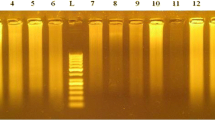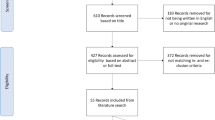Abstract
Background In this study, we evaluated if PITX2 DNA methylation is a marker for disease recurrence in lymph node-negative (LNN), steroid hormone receptor-positive (HR+) breast cancer patients. In addition, we studied the association between PITX2 DNA methylation and PITX2 gene expression. Patients and methods PITX2 DNA-methylation was measured in tumor tissue from 412 LNN/HR+ breast cancer patients who had not received any adjuvant systemic treatment. In addition, PITX2 DNA-methylation and mRNA expression was evaluated in 32 breast cancer cell lines. Results In univariate Cox regression analysis, DNA-methylation of PITX2 as a continuous variable was associated with early distant metastasis (HR = 1.71; P < 0.01) and poor overall survival (HR = 1.71; P < 0.01). In multivariate analysis together with the established prognostic factors age, tumor size and tumor grade, and steroid hormone receptor levels, both associations retained their significance (for MFS, HR = 1.74; P < 0.01; for OS, HR = 1.46; P = 0.02). In the breast cancer cell lines, PITX2 DNA methylation was inversely association with PITX2A and PITX2B mRNA expression (P < 0.01). Conclusions Hypermethylation of PITX2 is, in cell lines, negatively associated with PITX2 mRNA expression and, in clinical specimens, positively associated with breast cancer disease progression.


Similar content being viewed by others
References
Baylin SB, Herman JG (2000) DNA hypermethylation in tumorigenesis: epigenetics joins genetics. Trends Genet 16:168–174
Jones PA, Laird PW (1999) Cancer epigenetics comes of age. Nat Genet 21:163–167
Jones PA, Baylin SB (2002) The fundamental role of epigenetic events in cancer. Nat Rev Genet 3:415–428
Esteller M, Corn PG, Baylin SB, Herman JG (2001) A gene hypermethylation profile of human cancer. Cancer Res 61:3225–3229
Herman JG, Baylin SB (2003) Gene silencing in cancer in association with promoter hypermethylation. N Engl J Med 349:2042–2054
Herman JG, Graff JR, Myohanen S, Nelkin BD, Baylin SB (1996) Methylation-specific PCR: a novel PCR assay for methylation status of CpG islands. Proc Natl Acad Sci USA 93:9821–9826
Xiong Z, Laird PW (1997) COBRA: a sensitive and quantitative DNA methylation assay. Nucleic Acids Res 25:2532–2534
Maier S, Nimmrich I, Koenig T, Eppenberger-Castori S, Bohlmann I, Paradiso A, Spyratos F, Thomssen C, Mueller V, Nahrig J, Schittulli F, Kates R, Lesche R, Schwope I, Kluth A, Marx A, Martens JW, Foekens JA, Schmitt M, Harbeck N, European Organisation for Research, Treatment of Cancer PathoBiology g (2007) DNA-methylation of the homeodomain transcription factor PITX2 reliably predicts risk of distant disease recurrence in tamoxifen-treated, node-negative breast cancer patients—Technical and clinical validation in a multi-centre setting in collaboration with the European Organisation for Research and Treatment of Cancer (EORTC) PathoBiology group. Eur J Cancer 43:1679–1686
Logan M, Pagan-Westphal SM, Smith DM, Paganessi L, Tabin CJ (1998) The transcription factor Pitx2 mediates situs-specific morphogenesis in response to left-right asymmetric signals. Cell 94:307–317
Kioussi C, Briata P, Baek SH, Rose DW, Hamblet NS, Herman T, Ohgi KA, Lin C, Gleiberman A, Wang J, Brault V, Ruiz-Lozano P, Nguyen HD, Kemler R, Glass CK, Wynshaw-Boris A, Rosenfeld MG (2002) Identification of a Wnt/Dvl/beta-Catenin —> Pitx2 pathway mediating cell-type-specific proliferation during development. Cell 111:673–685
Kitamura K, Miura H, Miyagawa-Tomita S, Yanazawa M, Katoh-Fukui Y, Suzuki R, Ohuchi H, Suehiro A, Motegi Y, Nakahara Y, Kondo S, Yokoyama M (1999) Mouse Pitx2 deficiency leads to anomalies of the ventral body wall, heart, extra- and periocular mesoderm and right pulmonary isomerism. Development 126:5749–5758
Semina EV, Reiter R, Leysens NJ, Alward WL, Small KW, Datson NA, Siegel-Bartelt J, Bierke-Nelson D, Bitoun P, Zabel BU, Carey JC, Murray JC (1996) Cloning and characterization of a novel bicoid-related homeobox transcription factor gene, RIEG, involved in Rieger syndrome. Nat Genet 14:392–399
Arakawa H, Nakamura T, Zhadanov AB, Fidanza V, Yano T, Bullrich F, Shimizu M, Blechman J, Mazo A, Canaani E, Croce CM (1998) Identification and characterization of the ARP1 gene, a target for the human acute leukemia ALL1 gene. Proc Natl Acad Sci USA 95:4573–4578
Shiratori H, Sakuma R, Watanabe M, Hashiguchi H, Mochida K, Sakai Y, Nishino J, Saijoh Y, Whitman M, Hamada H (2001) Two-step regulation of left-right asymmetric expression of Pitx2: initiation by nodal signaling and maintenance by Nkx2. Mol Cell 7:137–149
Schweickert A, Campione M, Steinbeisser H, Blum M (2000) Pitx2 isoforms: involvement of Pitx2c but not Pitx2a or Pitx2b in vertebrate left-right asymmetry. Mech Dev 90:41–51
Martens JWM, Nimmrich I, Koenig T, Look MP, Harbeck N, Model F, Kluth A, Bolt-de Vries J, Sieuwerts AM, Portengen H, Meijer-Van Gelder ME, Piepenbrock C, Olek A, Hofler H, Kiechle M, Klijn JG, Schmitt M, Maier S, Foekens JA (2005) Association of DNA methylation of phosphoserine aminotransferase with response to endocrine therapy in patients with recurrent breast cancer. Cancer Res 65:4101–4117
Foekens JA, Portengen H, van Putten WL, Peters HA, Krijnen HL, Alexieva-Figusch J, Klijn JGM (1989) Prognostic value of estrogen and progesterone receptors measured by enzyme immunoassays in human breast tumor cytosols. Cancer Res 49:5823–5828
EORTC Breast Cancer Cooperative Group (1980) Revision of the standards for the assessment of hormone receptors in human breast cancer; report of the second E.O.R.T.C. Workshop, held on 16–17 March, 1979, in the Netherlands Cancer Institute. Eur J Cancer 16:1513–1515
Olek A, Oswald J, Walter J (1996) A modified and improved method for bisulphite based cytosine methylation analysis. Nucleic Acids Res 24:5064–5066
Martens JW, Sieuwerts AM, Vries JB, Bosma PT, Swiggers SJ, Klijn JG, Foekens JA (2003) Aging of stromal-derived human breast fibroblasts might contribute to breast cancer progression. Thromb Haemost 89:393–404
van Dijk JP, Heuver LH, van der Reijden BA, Raymakers RA, de Witte T, Jansen JH (2002) A novel, essential control for clonality analysis with human androgen receptor gene polymerase chain reaction. Am J Pathol 161:807–812
Wu J, Ellison J, Salido E, Yen P, Mohandas T, Shapiro LJ (1994) Isolation and characterization of XE169, a novel human gene that escapes X-inactivation. Hum Mol Genet 3:153–160
Lewin J, Schmitt AO, Adorjan P, Hildmann T, Piepenbrock C (2004) Quantitative DNA methylation analysis based on four-dye trace data from direct sequencing of PCR amplificates. Bioinformatics 20:3005–3012
Sieuwerts AM, Meijer-van Gelder ME, Timmermans M, Trapman AM, Garcia RR, Arnold M, Goedheer AJ, Portengen H, Klijn JG, Foekens JA (2005) How ADAM-9 and ADAM-11 differentially from estrogen receptor predict response to tamoxifen treatment in patients with recurrent breast cancer: a retrospective study. Clin Cancer Res 11:7311–7321
Kaplan EL, Meier P (1958) Non-parametric estimation from incomplete observations. J Am Stat Assoc 53:457–481
Gasparini G, Pozza F, Harris AL (1993) Evaluating the potential usefulness of new prognostic and predictive indicators in node-negative breast cancer patients. J Natl Cancer Inst 85:1206–1219
Frigola J, Song J, Stirzaker C, Hinshelwood RA, Peinado MA, Clark SJ (2006) Epigenetic remodeling in colorectal cancer results in coordinate gene suppression across an entire chromosome band. Nat Genet 38:540–549
Leu YW, Yan PS, Fan M, Jin VX, Liu JC, Curran EM, Welshons WV, Wei SH, Davuluri RV, Plass C, Nephew KP, Huang TH (2004) Loss of estrogen receptor signaling triggers epigenetic silencing of downstream targets in breast cancer. Cancer Res 64:8184–8192
Schausi D, Tiffoche C, Thieulant ML (2003) Regulation of the intronic promoter of rat estrogen receptor alpha gene, responsible for truncated estrogen receptor product-1 expression. Endocrinology 144:2845–2855
Resnick EM, Schreihofer DA, Periasamy A, Shupnik MA (2000) Truncated estrogen receptor product-1 suppresses estrogen receptor transactivation by dimerization with estrogen receptors alpha and beta. J Biol Chem 275:7158–7166
Acknowledgments
We would like to thank Dr. M. Schutte (Dept. Medical Oncology. Erasmus MC, Rotterdam, The Netherlands) for providing genomic DNA from all the cell lines included in the study. The European Union Sixth Framework Program (LSHC-CT-2003-504586) supported this project.
Author information
Authors and Affiliations
Corresponding author
Rights and permissions
About this article
Cite this article
Nimmrich, I., Sieuwerts, A.M., Meijer-van Gelder, M.E. et al. DNA hypermethylation of PITX2 is a marker of poor prognosis in untreated lymph node-negative hormone receptor-positive breast cancer patients. Breast Cancer Res Treat 111, 429–437 (2008). https://doi.org/10.1007/s10549-007-9800-8
Received:
Accepted:
Published:
Issue Date:
DOI: https://doi.org/10.1007/s10549-007-9800-8




